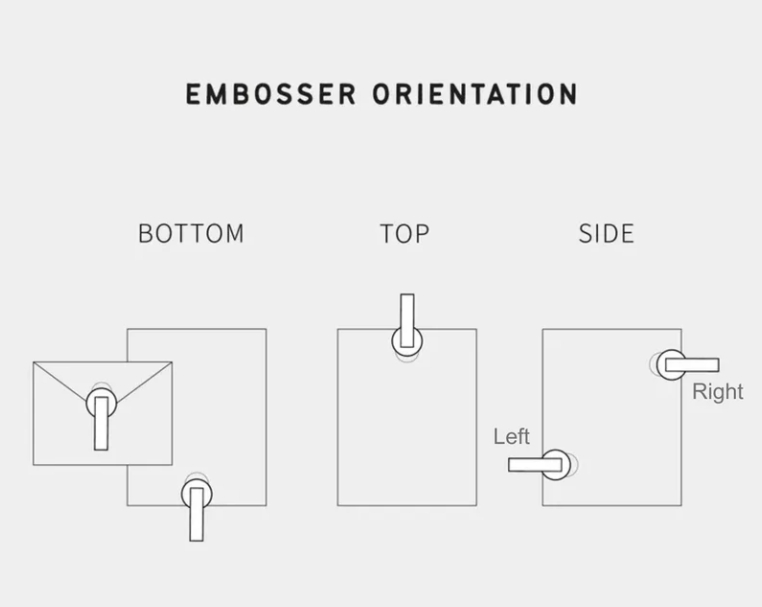What Is the Difference Between Stamp and Embossed Seal?
Introduction A stamp, also known as a seal, is a commonly used tool. Its surface is engraved with a pattern or text. To use it,

Besides the design and font, a crucial yet often overlooked element is the embossing angle when selecting a custom book embosser. The embossing angle determines the direction from which the impression is made on the paper, directly impacting the final product’s professionalism, aesthetics, and practical application. Choosing the wrong embossing angle can result in incomplete impressions, damage to binding materials, or an outcome that appears clumsy and inelegant. This article provides a comprehensive guide to embossing angles, explaining their definition, the ideal scenarios for each angle, key factors to consider when choosing, and how to make a final decision.

Before delving into specific angles, we must first precisely understand the meaning of the “embossing angle.”
Most personalized book embossers on the market offer four standard angles: Right, Top, Bottom, and Left. Each has its unique purpose and ideal situation.
A. Right Embossing Angle
B. Top Embossing Angle
C. Bottom Embossing Angle
D. Left Embossing Angle
Simply knowing the four angles is not enough. Making an informed decision requires deeper consideration.
Decision Flowchart:
2. Double-check: Can the desired precise impression location be easily achieved with the selected angle?
3. Final review: If I might work with other types of materials in the future, will this angle still be suitable? Do I need to compromise for the sake of versatility?
Frequently Asked Questions:
Conclusion
Choosing the correct embossing angle is not a complex puzzle, but it requires a conscious, needs-based decision-making process. By understanding the nature of the angles, familiarizing yourself with the best use cases for each, and carefully evaluating the specific materials you will handle, you can ensure you invest in an embosser that perfectly meets your needs and will provide years of satisfactory service. When in doubt, remember this golden rule: The binding edge of the material dictates the embosser’s entry point, and the entry point dictates the embossing angle you need.
Introduction A stamp, also known as a seal, is a commonly used tool. Its surface is engraved with a pattern or text. To use it,
Your personal library is more than just a collection of books. It’s your own world of knowledge and imagination. It shows your interests and how
Besides the design and font, a crucial yet often overlooked element is the embossing angle when selecting a custom book embosser. The embossing angle determines the
TRODISS, as China’s leading embossing stamp manufacturer, specializes in embossed seals and custom-designed designs. We engrave thousands of designs daily and have found that many
Our custom logo stamps are the highest quality. They stamp on your products clearly for the most visible perfect stamp. Our custom logo machines are the ultimate keepsake you can cherish forever.
Hot Tags
Hot Stamping Machines
Embossing Seals
Wax Seal Stamps
Keep in Touch
Annabelle Lee
Email: annabelle@trodiss.com
Add.: Room 1602, Block D, First International Business Building, Nancheng, Dongguan City, Guangdong Province, China.
Copyright © 2005-2025 Trodiss Group. All rights reserved